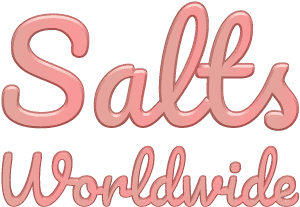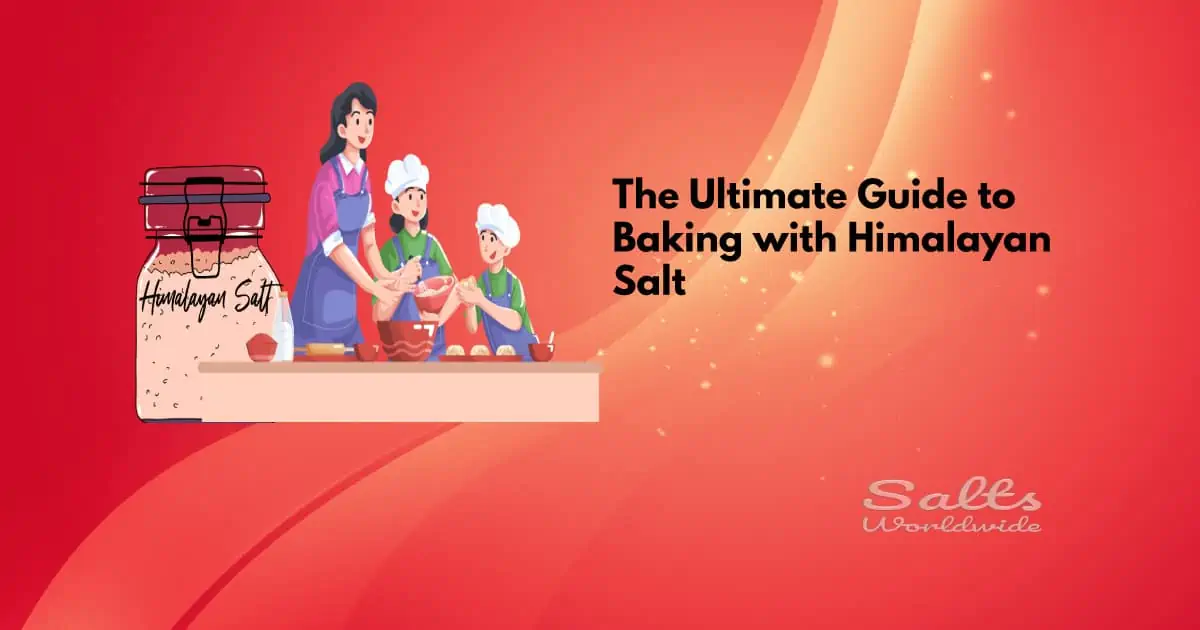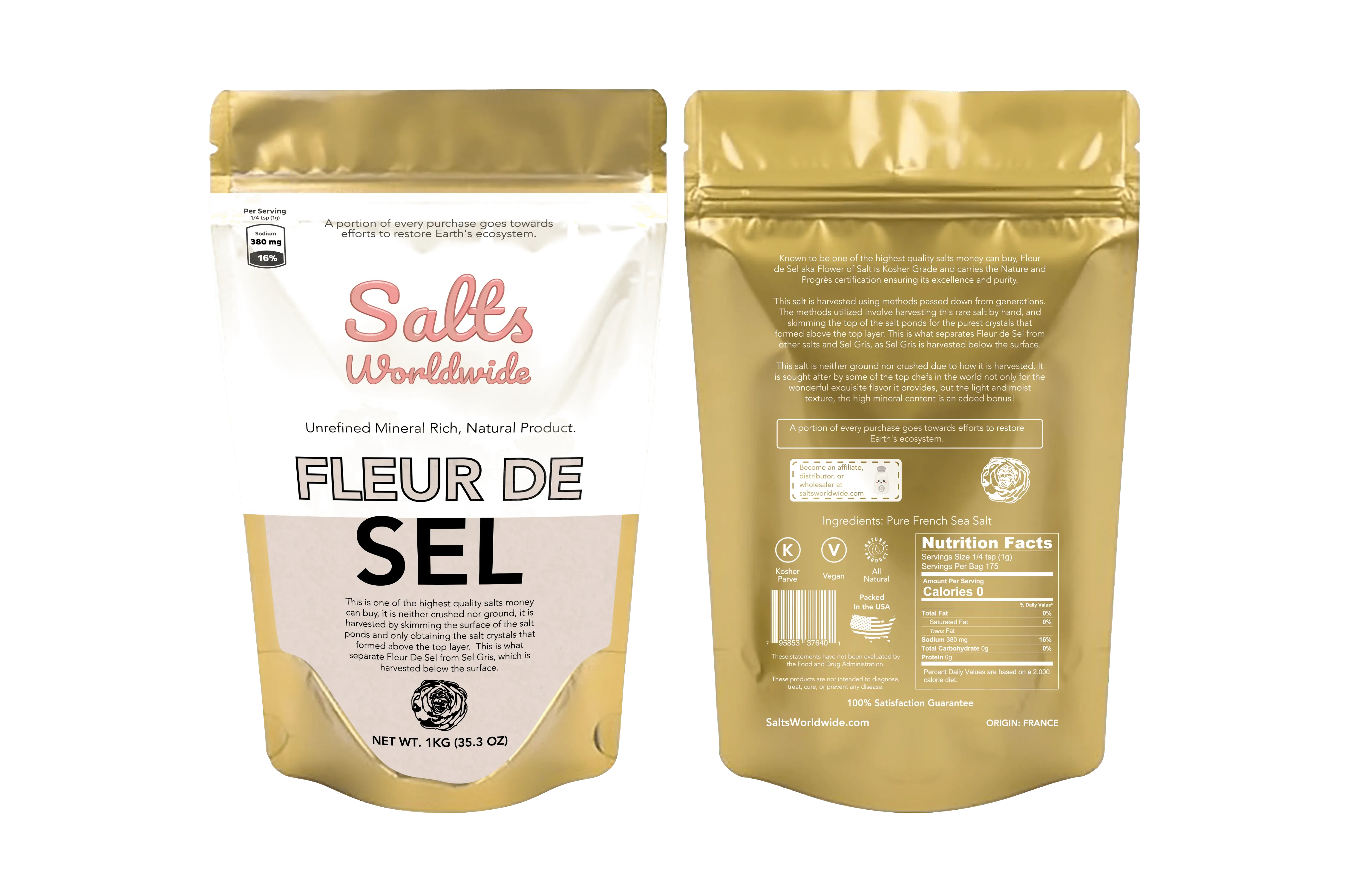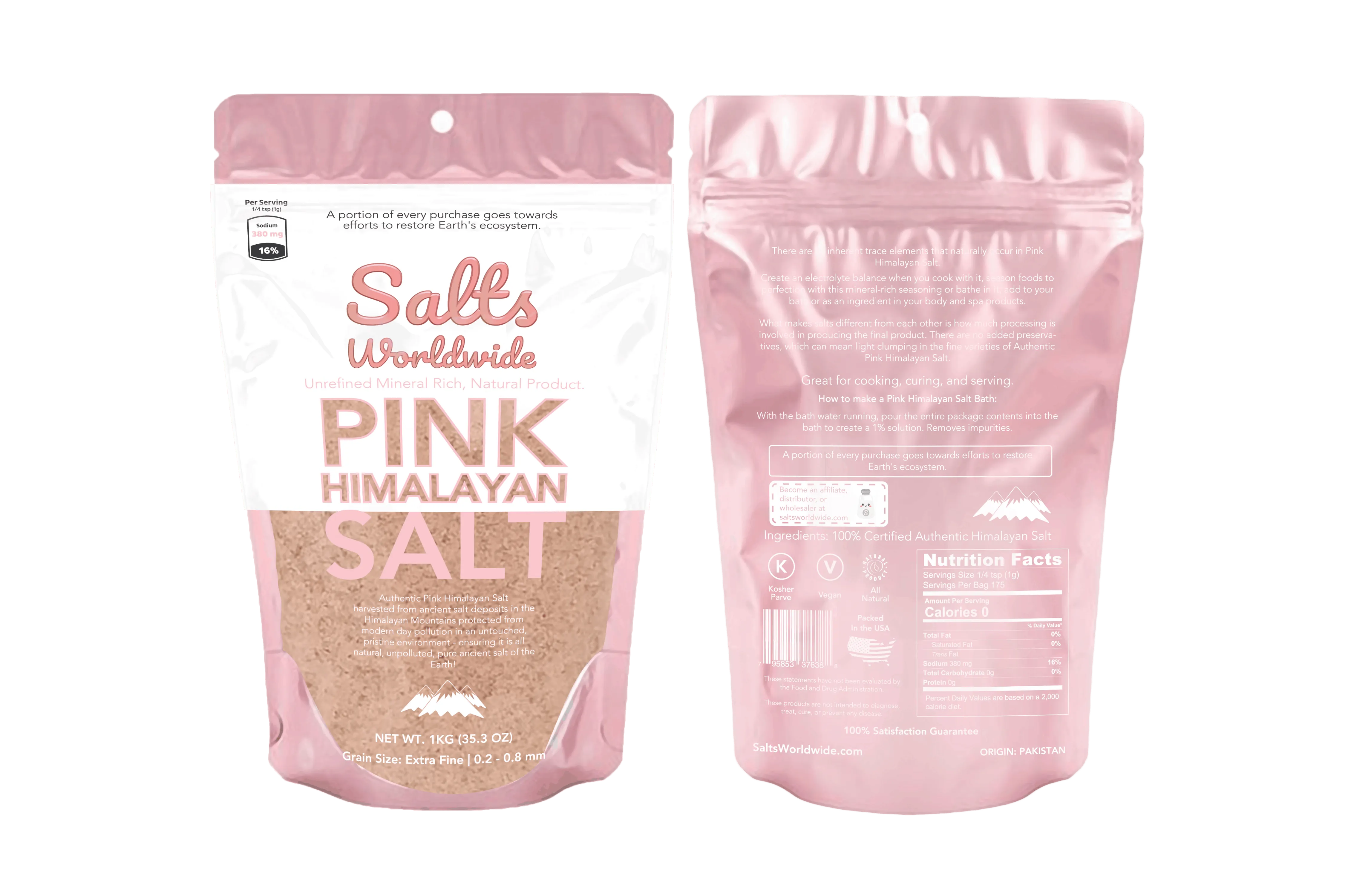Baking with Himalayan salt is a great way to create beautiful and delicious treats, but it can be difficult for those who are new to the process. After all, there’s no such thing as a one-size-fits-all recipe! In this blog post, we will cover everything you need to know about baking with Himalayan salt – from how much to use to safety tips and tricks.
Table of Contents
Which salt is best for baking?

The best salt for baking is Himalayan salt. It has a very pure flavor and doesn’t contain any additives or chemicals. It is also lower in sodium than table salt, so it is healthier for you to use.
Himalayan salt can be used in place of regular salt in most recipes. However, you may need to adjust the measurements slightly, since Himalayan salt is a bit denser than table salt. Start with using half as much Himalayan salt as you would regular salt, and then adjust from there if needed.
What is the difference between plain salt and iodized salt?

Plain salt, which is also known as table salt or iodized salt, consists of sodium and chloride. It contains an additive called iodine that helps prevent goiter (an enlargement of the thyroid gland).
Plain salt is cheap and readily available. However, it is often heavily refined with additives such as aluminum or anti-caking agents that are not good for you.
Iodized salt provides a source of iodine for your body. Iodine is essential to the production and functioning of thyroid hormones, which regulate metabolism in every cell throughout your body.
Iodized salt is a better option than plain salt and should be used in your baking recipes.
Plain salt and iodized salt both consist of sodium and chloride. However, iodized salt also contains an additive called iodine that is essential for the production of thyroid hormones in your body.
Iodized salt costs less than plain salt with additives but has fewer health benefits. When you bake, use quality sea salt such as Himalayan pink salt.
In terms of baking, plain salt is often cheaper and easier to find than iodized salt. However, plain salt contains additives such as aluminum or anti-caking agents that can be harmful when consumed in large amounts over time.
Iodized salt provides a source of essential iodine for your body’s production of thyroid hormones.
What is the difference between Himalayan salt and sea salt?

Himalayan salt is a type of salt that is mined from the Himalayan mountains. It is different than other types of salt because it contains more minerals and nutrients than other salts.
Himalayan salt is made up of 84 minerals and trace elements that are naturally present in the earth. These minerals make it different than any other salts because they provide health benefits such as helping to lower blood pressure, improving moods, increasing energy levels, and more.
Sea salt is another type of salt that is commonly used in cooking and baking. It can be found around the world from different oceans including the Atlantic ocean, Pacific ocean, Indian Ocean, and more.
Sea salts are not as healthy for you because they contain fewer minerals than Himalayan salt does. In order to make sea salt look white like Himalayan salt, they add chemicals and fillers to it.
Himalayan salt and sea salt both have different nutritional benefits. Himalayan salt contains more minerals and nutrients that help to improve health, while sea salts contain less of these natural elements. Because Himalayan salt has a larger mineral content than other types of salt, it is often used in cooking or baking recipes as well as being added to food at the table for its health benefits.
Sea salt is commonly used to add flavor to foods and for cooking. It is also added to the table as a condiment because it tastes good with different types of food.
In terms of baking, Himalayan salt is the better choice because it contains more minerals that are beneficial for your health. Sea salt does not have as many nutrients and can be harmful to your health in high doses. When baking, always use Himalayan salt instead of sea salt to ensure you’re getting the most out of your food.
What is the difference between kosher salt and regular salt?

Kosher salt is a type of salt that is typically used in Jewish cuisine. It has a larger grain size than regular table salt, and it is also less processed. Kosher salt is often used to season the meat before cooking, and it can also be used as a substitute for table salt in recipes.
Kosher salt is made by crushing large crystals of salt together. This process creates a more coarse grain size, which makes it less processed than regular table salt. Kosher salt also contains no additives or anti-caking agents, unlike some brands of table salt.
Regular salt is a type of table salt that has been processed to remove all additives. It is often used in cooking and at the dinner table. Table salts are typically packaged for use as a condiment or pickling agent, such as kosher or sea salt.
Regular table salt is made by extracting water from seawater using machines called evaporators. The resulting salt crystals are then cleaned and packaged for sale. In order to prevent the salt from clumping, additives such as iodine and anti-caking agents are often added to the salt crystals.
Kosher salt and regular table salt are both used for seasoning food. The main difference is in their processing methods and grain size. Kosher salt has a coarser, more irregularly shaped structure than table salt, as it does not go through the same shredding process that table salts do – nor is there any anti-caking agent or other additives added during the manufacturing process. Table salt is more finely ground and has a flakier texture, which makes it lighter in color than kosher salt. Kosher salt contains no additives whatsoever, but table salts may contain iodine or anti-caking agents to prevent clumping of the crystals during storage and transport.
In terms of baking, it is important to note that the only difference between these salts lies in their shape and size. They have identical chemical compositions, so will react with food ingredients in exactly the same way. As far as flavor goes, however, there are some subtle differences that can impact baked goods – kosher salt tends to be slightly “brinier” than table salt, while table salt has a more “salty” flavor. The best salt for baking is the one that you have on hand and are most comfortable using – both kosher salt and table salt will work well in recipes.
Benefits of Baking With Pink Himalayan Salt
Using pink Himalayan salt when baking has many benefits. One is it balances the body’s pH levels, aids in digestion, helps remove toxins from the body, regulates blood sugar levels, strengthens bones and teeth, aids in weight loss by boosting the metabolism, and keeps you hydrated.
Pink Himalayan salt’s benefits in baking are that it helps preserve food, makes the dough more elastic and smooth, gives a better texture of baked goods such as bread and cakes. It also enhances the flavor in both sweet and savory recipes. A few ways to use pink Himalayan salt when baking is for flake form: sprinkle on top of scones or biscuits before putting them into the oven, or add to the dough itself. Another way is to use it as a rub for meats such as pork or chicken before grilling or baking. Finally, you can dissolve it in water and then brush it on bread before baking for a crispy outer crust.
Comparing Kosher Salt vs. Himalayan Salt Baking
Kosher salt and Himalayan salt are two good salts but what is better for baking? In this blog post, I will compare and contrast the two salts so you can decide which to use in your next recipe.
What is the difference between kosher salt and Himalayan sea salt?
Kosher salt and Himalayan sea salt are two very different types of salts.
Kosher is a generic term used to describe any large-crystal, flaky salt that has been processed from its original form into cubes or flakes. It can be made with either evaporated seawater or ground rock (rock salt). Due to the fact that kosher salt is not iodized, it has a slightly milder flavor than regular table salt.
Himalayan sea salt, on the other hand, is a type of rock salt that is mined from the Himalayas. It contains 84 minerals and trace elements in its natural form, which gives it a unique pink color. Himalayan sea salt is also unprocessed, so it contains all 84 minerals and trace elements in its natural form.
Both salts are used for different purposes: kosher salt for cooking, Himalayan sea salt for baking. When using either of them in a recipe that requires salting the dish before serving, it is best to use a little less than the recipe calls for, as they are both saltier than regular table salt.
Which salt is better for high blood pressure?
The best salt for high blood pressure between Kosher salt and Himalayan sea salt is the Himalayan salt.
Himalayan sea salt contains minerals and elements that are beneficial for the body, unlike conventional table salts which have harmful ingredients in them such as aluminum, bromide, and iodine.
The minerals present in Himalayan sea salt are potassium, calcium, magnesium, iron, zinc, and selenium. These nutrients help regulate blood pressure as well as supply the body with the necessary energy for various metabolic functions. The spices such as cinnamon and nutmeg that are often used in baking also help to regulate blood pressure. Himalayan salt is a healthier choice for those with hypertension and can be used in place of regular table salt.
Why do chefs prefer kosher salt?
The salt that chefs prefer between Kosher salt and Himalayan sea salt is Kosher salt. The reason why is because it has a more precise way of measuring the amount of salt you add to your food and cooking, so when comparing Kosher versus Himalayan sea salt, kosher wins hands down!
What is the healthiest salt to cook with?
The healthiest salt to cook with between Kosher salt and Himalayan sea salt is Himalayan sea salt. Kosher salt is a great choice, but it has a slightly lower mineral content than Himalayan sea salt. Both salts are healthy options, but Himalayan sea salt contains more minerals that can benefit your health. When cooking with either of these salts, make sure to use the proper measurement for the recipe you are following to ensure the best end result.
Tips for Using Himalayan Salt for Baking
Using Himalayan Salt for baking is a great way to add flavor and minerals to your baked goods. Here are some tips for using Himalayan salt in your recipes. The first tip, use it as you would regular table salt. The ratio of Himalayan salt to table salt can vary depending on the recipe, but generally, you can use the same amount of Himalayan salt as table salt. However, you might want to use less depending on how salty your recipe is and how much flavor the Himalayan salt adds because it has a stronger taste than regular table salt.
The second tip for baking with Himalayan Salt is to try it in recipes and sweet treats. In addition to adding flavor, Himalayan salt adds minerals that are necessary for good health. And the taste is delightful! You will be surprised at how much you like using this type of salt in your baking.
Using Himalayan salt with baking also aids digestion because when ingested on an empty stomach, Himalayan salt goes directly to the liver, where it is immediately released into the bloodstream.
Another great tip for baking with Himalayan salt is that you can use it in recipes that call for cheese or butter by simply substituting a quarter of your recipe’s required amount of either ingredient with Himalayan salt and lime juice instead. The salt and lime juice replace the flavor of cheese or butter while adding minerals.
And lastly, if you do not have Himalayan salt on hand but still want to use it in your recipes, try substituting a quarter cup each of Himalayan salt and baking soda for every tablespoon called for in your recipe. You will need to add more liquid to the recipe, which can be done by increasing the amount of egg and/or oil.
FAQs
Why is salt added to cake recipes?
Salt is added to cake recipes for flavor and to help leaven the cake. Salt helps activate the baking powder or soda in the recipe, which causes the batter to rise. Without salt, cakes can be bland and have a poor texture. Try adding a pinch of salt to your next batch of cupcakes and see if you notice a difference in flavor and texture!
Salt is also a preservative, so it can help keep cakes fresh for longer. In fact, salt was once used as a way to preserve food before the days of refrigeration. So if you’re making a cake that needs to last for several days, adding a little bit of salt may be helpful.
What are the side effects of Himalayan salt?
Himalayan salt has side effects and these are, Increased flatulence due to an increase in salt intake; Increased thirst, since the body is trying to flush out excess water and sodium. This is good for you if your goal is weight loss or a cleaner skincare routine; Oily hair and oily face. Although this does not necessarily happen with everyone, it might be because the body is trying to get rid of excess water.
Why is salt important in yeast bread?
Salt is important in yeast bread because it controls the activity of the yeast. The salt inhibits the yeast’s ability to reproduce and makes it produce carbon dioxide gas, which is what makes bread rise. Without salt, bread would not rise and would be dense and heavy.
Salt also affects the flavor of the bread. A small amount of salt gives the bread a nice savory flavor that goes well with the sweetness of the bread.
Salt is also important for the texture and appearance of bread. It affects how air bubbles are incorporated into the dough, which in turn affects how large they are when baked. The salt can cause some small air pockets that don’t hold onto much gas to deflate as well (cook’s Illustrated). This helps give a more even texture and shape to the bread.
Salt also affects how much moisture is absorbed into a loaf of bread as it bakes, which in turn affects its appearance (Cook’s illustrated). This can cause over-baked loaves that are too firm or under-cooked loaves with an uneven crumb structure.
How can I tell if my Himalayan salt is real?
Himalayan salt is real when it is mined in the Himalayan mountains and when it has a pinkish color.
When you open your bag of Himalayan salt, there will be crystals on the top and bottom layers. The larger pieces are usually used for cooking while the finer grains can be used to make bath salts or other types of minerals that require smaller particles. If you’re not sure about the quality of your Himalayan salt, put a few crystals in water and watch them dissolve. If they dissolve quickly, it’s likely that your salt is fake. Himalayan salt should take a little longer to dissolve because the mineral content is high.
Choosing the Right Salts for Baking
The best salt when baking is sea salt because it’s pure without any additives. If you can’t find sea salt, look for Himalayan or other types of mineral salts that have been harvested in the Himalayas where they are mined using traditional methods. When buying these products, ensure they meet all the criteria mentioned above and don’t buy anything with yellow color as this is likely a sign of impurities.
When it comes to baking, using the right salt is essential for getting the best flavor and texture. Sea salt is always a good choice because it’s pure and doesn’t have any additives. If you can’t find sea salt, try Himalayan or other mineral salts that have been harvested in the Himalayas. When buying these products, make sure they meet all the criteria mentioned above and avoid anything with a yellow color, which is likely a sign of impurities.
Fleur De Sel
A rare and expensive form of sea salt that is harvested in parts of France. Known to be one of the highest quality salts money can buy.



